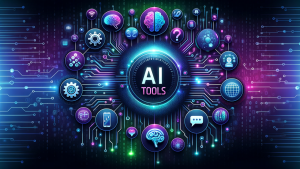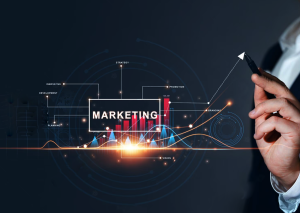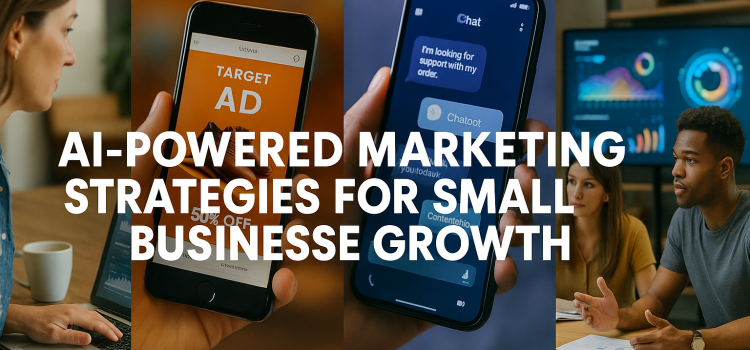
Introduction
A strong marketing approach can make or break a small business. Today, AI-powered marketing strategies give small teams big-business power. By harnessing tools like chatbots, predictive analytics, and automated content systems, small business AI marketing can boost leads, save time, and improve customer loyalty. In this article, we explain what AI-powered marketing means, why it matters for small business growth, and how to apply top strategies step by step. Along the way, you’ll find tips for easy wins, a comparison table of popular tools, and a look at future trends. Read on to learn how AI can transform your marketing and drive real growth.
What is AI-Powered Marketing?
AI-powered marketing uses artificial intelligence to automate, personalize, and optimize marketing tasks. Instead of manual guesswork, AI systems analyze data patterns to make smart decisions. These tools can sort through customer behavior, web traffic, and campaign responses in seconds. They then deliver tailored messages or suggest the best next step.
Core Components
At the heart of AI marketing are machine learning models and data analytics. Machine learning finds hidden trends in large data sets. Natural language processing helps chatbots understand questions. Predictive analytics scores leads by their likelihood to buy. Together, these components handle routine tasks and free teams to focus on creative strategy.
Why It Matters for Small Businesses
Small business AI marketing levels the playing field. You don’t need a big budget to use chatbots for customer support or automated email sequences. Even simple AI tools can boost conversion rates and reduce costs. By adopting AI-powered marketing strategies early, small businesses gain an edge in efficiency and customer experience.
Benefits of AI-Powered Marketing for Small Businesses
AI brings several clear advantages for small business growth.
First, automation saves time. Tasks like email sending, social media posting, and ad bidding happen without manual effort. This frees up staff for higher-value work like content planning or client calls.
Second, personalization improves engagement. AI marketing tools can deliver the right message to the right person at the right time. A shopper who browses running shoes might see a targeted email with a discount, boosting open and click rates.
Third, data-driven decisions reduce risk. Instead of guessing which ad copy works best, you can run AI-driven A/B tests and let the system pick the winner. Predictive analytics can forecast sales and help allocate budgets where they matter most.
Finally, growth scales easily. As your customer base grows, AI systems handle more users without adding headcount. Chatbots manage support chats around the clock, and lead-scoring tools prioritize follow-up on hot leads.
Key AI-Powered Marketing Strategies

Small businesses can adopt several core strategies to leverage AI in their marketing mix.
Chatbots and Conversational AI
Chatbots are AI-driven agents that chat with website visitors. They answer common questions, book appointments, or guide shoppers to products. A well-designed chatbot can handle dozens of customer queries at once, ensuring quick responses and capturing leads outside business hours. To get started, choose a chatbot platform that integrates with your website and set up simple flows for FAQs and lead capture.
Predictive Analytics and Customer Insights
Predictive analytics uses past behavior to forecast future actions. For example, it can score website visitors by their probability to convert. With these insights, you can target high-value prospects with tailored offers. Small businesses can use predictive tools to decide which customer segments to nurture and which campaigns to pause.
Email Personalization and Automation
Automated email sequences triggered by user actions keep customers engaged. When someone joins your mailing list, an AI system can send a welcome series, product recommendations, and reminders at the best time. Personalization tokens like first name, past purchase, or browsing history improve open rates. Small business AI marketing platforms often include drag-and-drop editors for quick setup.
Content Creation and Curation Tools
AI can help generate blog outlines, social media captions, and ad copy. Tools like GPT-based assistants can produce drafts in seconds. While you still need to edit for tone and accuracy, AI-based content creation saves hours of writing time. Content curation tools also suggest trending topics and relevant articles to share with followers, keeping your channels active.
Social Media Automation and Targeting
Social media AI tools schedule posts at optimal times based on audience activity. They analyze engagement data to recommend hashtags, images, and captions that resonate. For paid social campaigns, AI manages bids and budgets in real time, ensuring you get the best return on ad spend. Even with a small budget, smart AI targeting can help you reach the most relevant prospects.
How to Implement AI-Powered Marketing

Moving to AI-driven marketing requires a clear plan and the right tools.
Define Clear Goals
Start by setting specific targets. Do you want to increase newsletter signups by 20 percent? Or reduce support response time to under five minutes? Clear goals help you choose the right AI features and measure success.
Audit Your Data
AI needs clean, organized data to work well. Review your customer lists, website analytics, and sales records. Remove duplicates, fix errors, and ensure consistent formats. Well-structured data improves AI accuracy and insights.
Choose the Right Tools
Evaluate AI marketing platforms based on your goals and budget. Some tools excel in chatbots, while others shine in email automation or analytics. Look for solutions with easy integration into your existing CRM, website builder, or e-commerce platform.
Train Your Team
Offer hands-on training for staff who will manage the AI tools. Cover basics like editing chatbot scripts, reviewing analytics dashboards, and tweaking email workflows. Encouraging team buy-in ensures smooth adoption.
Start Small and Scale
Begin with one or two AI strategies. For instance, deploy a chatbot for FAQs and set up an automated welcome email series. Once you see wins, expand into predictive analytics and social media AI. Small, steady steps reduce overwhelm and build confidence.
Measuring Success with AI Tools

Tracking the impact of your AI-powered marketing is essential to refine strategies and prove ROI.
Key Performance Indicators
Monitor metrics like conversion rate, click-through rate, and customer acquisition cost. For chatbots, track resolution rate and lead capture rate. In email campaigns, watch open and click rates. Dashboards in AI platforms typically visualize these KPIs in real time.
A/B Testing and Optimization
Use AI to run A/B tests on headlines, images, and calls to action. Let the system identify winning variants and allocate more budget to top performers. Continuous optimization ensures your campaigns get better over time.
Customer Feedback Loops
Combine quantitative data with qualitative feedback. Send short surveys after chatbot interactions or email sequences. Use AI-driven sentiment analysis to spot unhappy customers early and adjust messaging or support processes.
Comparison of Popular AI Marketing Tools
| Tool Name | Function | Key Feature | Pricing Tier |
|---|---|---|---|
| ChatBuddy | Chatbot & live chat | 24/7 AI chat with lead capture | Starts at $29/mo |
| PredictX Analytics | Predictive analytics | Lead scoring and sales forecasting | Starts at $49/mo |
| MailAuto Pro | Email automation | Behavior-based triggers | Starts at $19/mo |
| ContentCraft AI | Content creation | AI-driven copy and image suggestions | Starts at $39/mo |
| SocialSync AI | Social media scheduling | Optimal post timing and hashtag AI | Starts at $25/mo |
Challenges and Solutions
AI marketing brings new power but also fresh hurdles.
High Initial Setup Effort
Some AI tools need time to set up and train. Solution: Focus on one process at a time. Use template-led chatbot scripts and email sequences. As you collect data, the AI will learn and improve.
Data Privacy and Compliance
Handling customer data responsibly is vital. Solution: Choose tools with built-in GDPR and CCPA compliance. Update your privacy policy and get clear consent for data use.
Overreliance on Automation
Too much automation can feel impersonal. Solution: Blend AI with human touch. Let chatbots handle routine queries, but offer a smooth handoff to real agents for complex issues. Use AI insights to guide human-led outreach and relationship building.
Tips for Getting the Most from AI Marketing

Integrate these best practices to boost your results.
Regularly Review and Tweak
Set aside time each week to check dashboards and tweak workflows. Small adjustments add up to big gains over time.
Keep Content Fresh
Use AI content tools to generate new topic ideas. Rotate images and headlines to prevent ad fatigue.
Leverage Multi-Channel Data
Connect website, email, social, and CRM data in one platform. Unified data gives a 360-degree view of customers and leads to more precise targeting.
Future Trends in AI Marketing
AI marketing continues to evolve with cutting-edge advances.
Voice and Conversational Commerce
As smart speakers and voice assistants grow, AI-driven voice commerce will let customers place orders by speaking. Small businesses can prepare by optimizing content for voice search and integrating voice-enabled chatbots.
Hyper-Personalization
Next-generation AI will deliver one-to-one marketing at scale. Customer profiles will include real-time behavior, enabling dynamic content that adapts to each user in the moment.
Augmented Reality (AR) Shopping
AI combined with AR will let shoppers “try on” products virtually before buying. Small retailers can adopt AR tools to showcase products in customer environments, reducing returns and boosting satisfaction.
Conclusion
AI-powered marketing strategies offer small businesses a clear path to growth. By using chatbots for instant customer support, predictive analytics for smarter targeting, and automated email and content tools, you can boost efficiency and engagement. Start by defining goals, cleaning your data, and choosing user-friendly platforms. Measure success with key metrics and feedback loops. Balance AI with human touch to maintain authenticity. As voice commerce, hyper-personalization, and AR emerge, staying ahead of these trends will keep you competitive.
Call-to-Action: Ready to supercharge your marketing with AI? Sign up for a free trial of our top-recommended AI marketing tools today and watch your small business grow!










